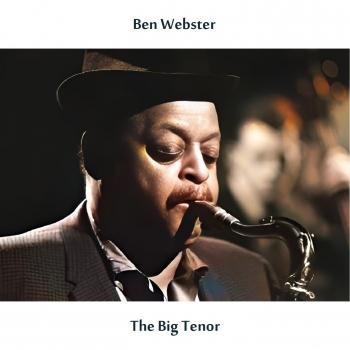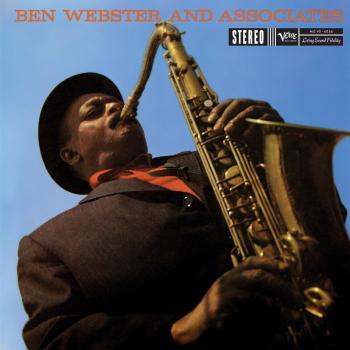Ben Webster
Biography Ben Webster
Ben Webster
The nickname ”The Brute and the Beautiful” was aptly given to tenor saxophonist Ben Webster. He became famous for his beautiful sound which gave his ballad playing a unique touch of tenderness, while his playing in faster tempos was virile and filled with growl, and when sober he was the kindest and gentlest man, witty and entertaining and the natural center of the gathering, while he was unpredictable and violent when he had consummated too much of alcohol. Despite this Dr. Jekyll-Mr. Hyde-personality he was a much loved musician and recorded a fairly amount of excellent records of which most still are in stock, due to the fact that he is the best selling tenor saxophonist in jazz.
Ben(jamin Francis) Webster was born in Kansas City, MO on March 27, 1909. In elementary school he studied violin and taught himself piano, inspired by the nearby living Pete Johnson who taught him to play the blues. In 1927 he played for silent movies in Kansas City, but left town a little later to play with a small territory band, but in the spring of 1928 he was again playing for silent movies, this time in Amarillo, Texas. Here he met Budd Johnson who taught him how to make a sound on a saxophone, and Webster got so interested that he borrowed an alto saxophone. In 1930 he left Amarillo with Gene Coy’s Happy Black Aces, and after a few months Coy baught him his first tenor saxophone, because ”I couldn’t express myself on alto. The tenor had a bigger sound.”
From then on, Webster’s carreer took some fast leaps forward. After Coy, he joined first Jap Allen’s band and then Blanche Calloway’s before he became a member of Bennie Moten’s important band and contributed some fine solos on the band’s famous marathon recording session in December 1932, such as Moten Swing. Shortly afterwards, Webster returned to Kansas City where he got hired by Andy Kirk, and in June 1934 he went to New York to play with Fletcher Henderson’s famous orchestra, actually switching job with Lester Young who in turn went to Kirk. The next few years were spent with Benny Carter (late 1934), who was the first to see Webster’s potential as a ballad interpreter (Dream Lullaby), Willie Bryant (1935-36), Cab Calloway (1936-37), before he rejoined Henderson in July 1937 for a short year after which he joined first Stuff Smith and later Roy Eldridge in New York. During these years, Webster also participated in some small group recording sessions, notably those led by Teddy Wilson and Billie Holidaye e.g. What a Little Moonlight Can Do.
In April 1939 he became a member of Teddy Wilson’s big band and was its most important soloist, but a dream came true when he was offered a permanent job in Duke Ellington’s orchestra. He therefore left Wilson in January 1940 and went to Boston to play his first job with Ellington. (Actually he had subbed for Barney Bigard on two short occasions, in 1935 and 1936).
Webster stayed with Ellington until early August 1943, and it was during these years he gained national and international fame with recordings like Cotton Tail - which became his signature tune - Jack the Bear, Harlem Air Shaft, and Sepia Panorama.
Webster started out as a Coleman Hawkins disciple, but under the influence of Ellington his style matured and became more personal. In quick tempos his solos contained great rhytmic momentum, a rasping timbre and an almost brutal aggressiveness, while his ballad playing was breathy and sensual, delivered with one of the most beautiful sounds ever captured on a tenor saxophone.
After leaving Ellington, Webster formed his own small groups or played with other small ensembles, e.g. John Kirkby in 1944 in New York. In late 1948 he rejoined Ellington for a short year, after which Webster returned to Kansas City to play with Bus Moten, Bob Wilson and Jay McShann. From 1952 he spent his time between Los Angeles and New York playing with his own groups, freelancing, or recording with a variety of soloists, among them singers like Billie Holiday, Ella Fitzgerald, Carmen McRae, Frank Sinatra, Joe Williams, and Jimmy Witherspoon with whom Webster toured reguarly around 1960.
Webster toured with Norman Granz’s Jazz at the Philharmonic in the fall of 1953 and 1954, and it was also Granz who was instrumental in giving Webster a recording contract that gave his career a new lift with excellent albums such as King of the Tenors (1953) and Ben Webster Meets Oscar Peterson (1959. For more information visit: http://www.benwebster.dk












